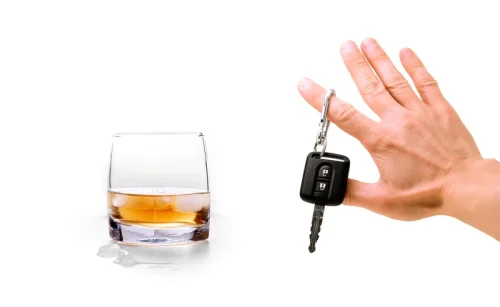
Wilson was the first to kick his alcohol dependence. He attributed his success to working with other alcoholics. He based his principles on that work and on his meetings with Smith, whom he also helped to achieve sobriety. He believed strongly that alcoholism affected the body, mind, and spirit. Although the organization grew slowly in those early days, it also grew steadily.
- The Central Office is also fully self-supporting through the sale of literature and member contributions.
- People are encouraged to take an honest look at themselves, then deconstruct their egos and rebuild, little by little.
- Many people suffering from alcoholism continue to find success in recovery by participating in AA’s program.
- With AA, not everyone has the ability to understand what it means to keep all of the steps in mind after completing them.
- The 12 Principles of AA drew heavily from these spiritual elements.
Twelve Steps and Twelve Traditions ASL – Tradition Twelve
What are the 12 Principles of AA and how do they work in recovery? A complete answer to this question begins with a quick history of how these principles originated, who developed them, and why. You’ll then get to learn about each principle separately and what it means…. You can help people who are affected by alcoholism by making a donation to the Cleveland District Office. Admitting powerlessness is not the same as admitting weakness. It means asking for help, leaning on others and relying on your support system.
Learn More About Alcoholics Anonymous and 12-Step Programs
- Is not allied with any sect, denomination, politics, organization or institution; does not wish to engage in any controversy, neither endorses nor opposes any causes.
- Published in 1939, the AA Big Book contains 11 chapters that include personal stories and spiritual insights.
- If there are any concerns about content we have published, please reach out to us at
- The AA program encourages individuals who identify as alcoholics to admit they are powerless over alcohol and seek help from a ‘higher power’ through prayer, meditation, and moral self-inventory in order to recover from alcoholism.
- The goal of the 12 steps is to provide a framework for personal growth and spiritual development, as well as to help individuals learn to live a life free from addiction.
Many people in recovery from alcohol addiction work the 12 Steps with a sponsor as a part of AA. The process includes believing in a power greater than yourself, admitting past mistakes, making amends to people you have harmed through drinking, and continuing to focus on spiritual growth. The Big Book in Alcoholics Anonymous (AA) is a foundational text outlining the principles of recovery for individuals struggling with alcohol use disorder (AUD). Published in 1939, the AA Big Book contains 11 chapters that include personal stories and spiritual insights.

What Is the Purpose of Learning the Principles of AA?
The program aims for a “spiritual awakening” as the path to sobriety and recovery. Alcoholics Anonymous is a fellowship of men and women who share their experience strength and hope with each other that they may solve their common problem and help others to recover form alcoholism. The only requirement for membership is a desire to stop drinking. Membership; we are self supporting through our own contributions. Is not allied with any sect, denomination, politics, organization or institution; does not wish to engage in any controversy, neither endorses nor opposes any causes.
- AA is self-supporting, with donations from members covering expenses, and it operates through an “inverted pyramid” structure, where individual groups function autonomously.
- Having had a spiritual awakening as the result of these steps, we tried to carry this message to alcoholics and to practice these principles in all our affairs.
- Alcoholics in AA live their lives in line with a set of “promises,” which also can be found in the AA Big Book.
- Step 5 is about taking the moral inventory made in step 4 and admitting first to God, next to yourself, and last to another person.
- The Serenity Prayer is commonly used in AA meetings as a tool for reflection and guidance.
The organization does not accept outside contributions and relies heavily on literature sales. AA also provides services in hospitals, treatment centers, and correctional facilities. The AA program encourages individuals who identify as alcoholics to admit they are powerless over alcohol and seek help from a ‘higher power’ through prayer, meditation, and moral what does aa stand for alcohol self-inventory in order to recover from alcoholism. The Big Book introduces the concept that alcoholism is an “illness,” requiring a spiritual solution, though AA refrains from calling it a disease. Members are encouraged to attend meetings, maintain regular contact with other alcoholics, and find a sponsor, who helps guide them through the twelve steps.

It means admitting—and accepting—that you’re living with a disease that alters your brain. It might seem backward, but when you admit that you don’t have power, you finally access the power you need. The Big Book describes the results of taking the Steps in a passage on pages 83 and 84, which has come to be referred to as the Twelve Promises.
Hospitals & institutions
Our primary purpose is to stay sober and to help other alcoholics achieve sobriety. The 12 steps are a set of guiding principles that were developed by Alcoholics Anonymous (AA) as a way to help individuals struggling with addiction achieve and maintain sobriety. The goal of the 12 steps is to provide a framework for personal growth and spiritual development, as well as to help individuals learn to live a life free from addiction. The steps involve acknowledging the presence of addiction in one’s life, seeking guidance and support from a higher power, making amends for past mistakes, and continuing to practice self-reflection and growth on an ongoing basis.

The Twelve Concepts for World Service
The Experience Blog

